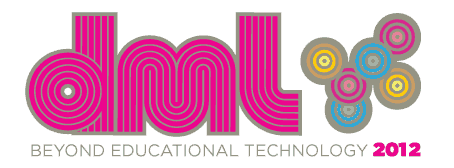Join us at DML 2012: Extreme Makeover DML Edition: Rethinking designs for younger and older users | March 2, 2012
Attending the DML 2012 Conference next week in San Francisco?
Don’t miss our panel:
Extreme Makeover DML Edition: Rethinking designs for younger and older users,
Friday, March 2, at 2:30 pm
The Fillmore Room.
 Most new consumer technologies are designed for the 18- to 49-year-old set. But when a product strikes success across this market, it inevitably reaches the hands of both younger and older users. To be sure, this spillover has positive implications for children and senior citizens alike, as new technologies offer new opportunities for learning, communication, productivity, and play, regardless of age. However, given the rapid rate at which such penetration occurs, there’s little time to redesign these popular platforms or the media they deliver in ways that best support their “unintended” users’ developmental stages, needs, interests, and lifestyles. Too often, we see children and seniors failing to reap the maximum benefit from new technologies as a result.
Most new consumer technologies are designed for the 18- to 49-year-old set. But when a product strikes success across this market, it inevitably reaches the hands of both younger and older users. To be sure, this spillover has positive implications for children and senior citizens alike, as new technologies offer new opportunities for learning, communication, productivity, and play, regardless of age. However, given the rapid rate at which such penetration occurs, there’s little time to redesign these popular platforms or the media they deliver in ways that best support their “unintended” users’ developmental stages, needs, interests, and lifestyles. Too often, we see children and seniors failing to reap the maximum benefit from new technologies as a result.
This panel will bring together representatives from academia, advocacy, and industry to highlight efforts taking place in these sectors to optimize popular platforms and media for younger and older users, including:
- – Jeff Makowka, Senior Strategic Advisor in the Thought Leadership Group at AARP, advocates for better design of consumer electronics for users of all ages. His “Design for All” campaign aims to lower barriers to use, raise adoption rates, and generally make things easier to use.
- – Allison Druin, Director of the Human-Computer Interaction Lab at the University of Maryland, has worked with Google to investigate how its popular search engine is used by children as young as age 7, and influence adjustments to the tool’s interface so that young children can be more successful searchers.
- – Sirius Thinking’s Cynthia Chiong will share findings from a study that compared how parents and preschoolers read e-books versus how they read print books together. Findings from this research will be used to design e-books that better support learning and conversation between parents and children.
- – Rafael “Tico” Ballagas of Nokia Research Center worked with the Joan Ganz Cooney Center to design Story Visit, a Skype-based storybook reading device that connects grandparents and grandchildren in real-time co-reading activity.
Panelists will have several minutes to share their experiences redesigning the products mentioned above, and then discuss the important tensions between what we think we knew about design for younger and older audiences, and the reality of digital media use in the lives of these users.
Please join the conversation! Learn from the panelists’ stories and share your own.
Conference information and schedule can be found here: http://dml2012.dmlcentral.net/.
See you in SF,
Lori Takeuchi & Sarah Vaala



